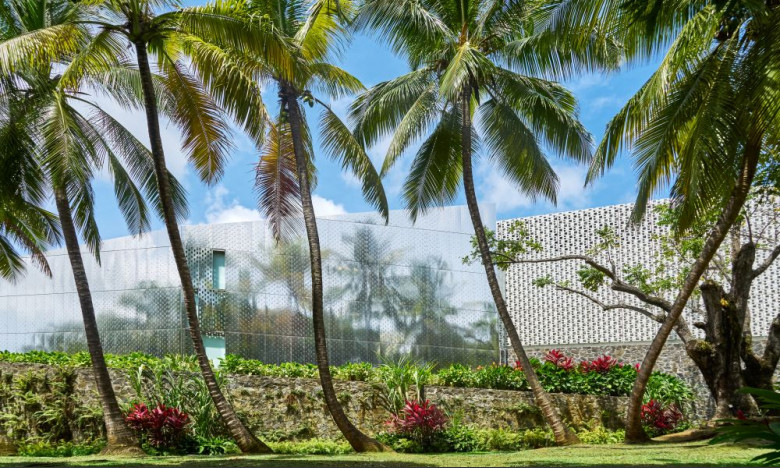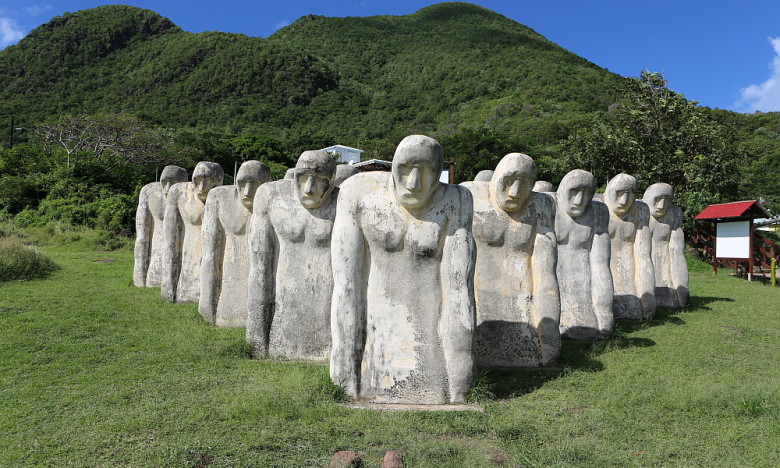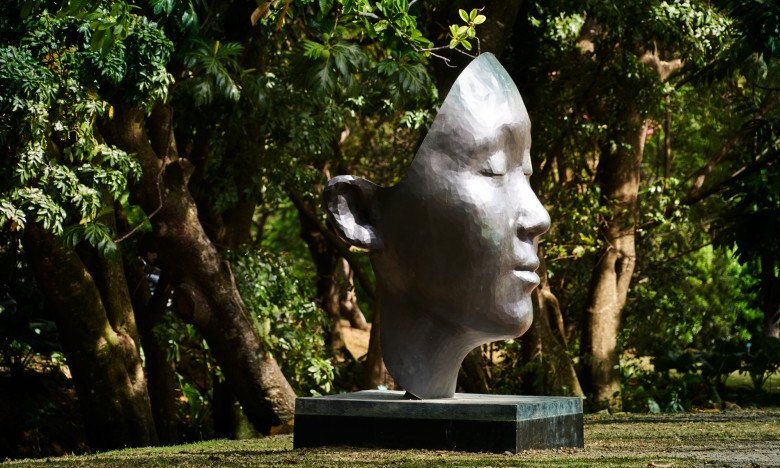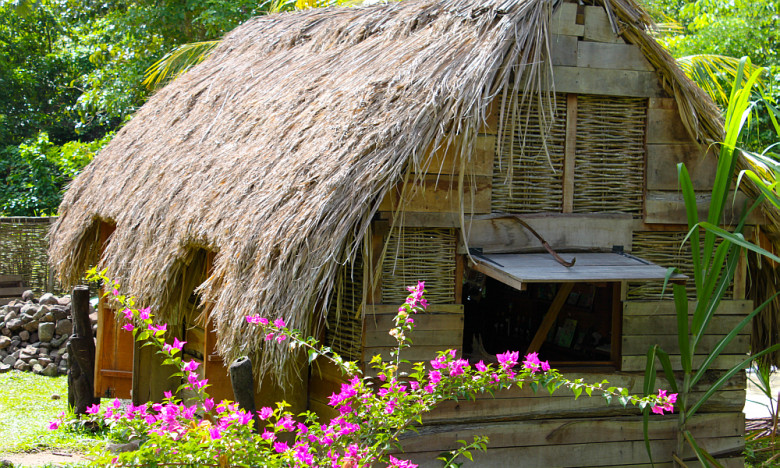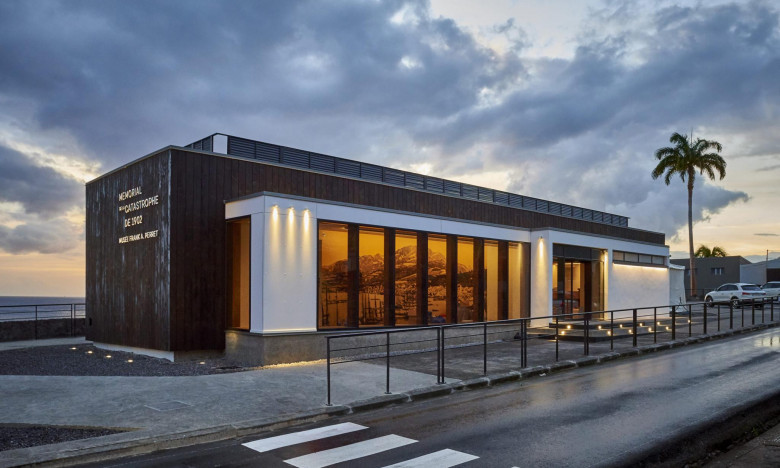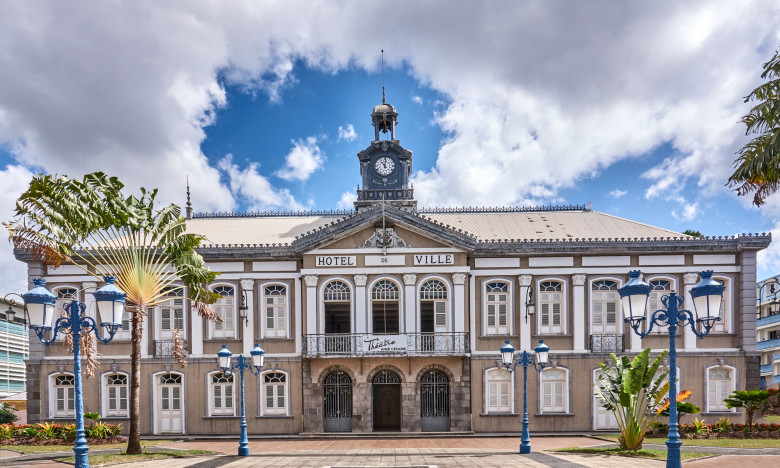A strong culture and historical heritage
Martinique also possesses a very rich history and cultural heritage, which visitors can discover during their stay through an impressive network of museums and monuments throughout the island.
• Aimé Césaire Museum
The museum is located within Aimé Césaire’s former office on the second floor of the former Fort-de-France City Hall as a sign of recognition and respect. As a man of letters and a political leader from Martinique, Aimé Césaire was Mayor of the island’s capital city, Fort-de-France, from 1945 to 2001. The place remains as it used to be, showcasing his family, political and literary life. Aime Cesaire was also a co-founder of the Negritude Literary Mouvement which fought against colonialism and discrimination and for black civils rights around the world. QUESTION: Est-ce que la maison natale d’Aimé Césaire va etre transformee en musee ?
• Slave Savanah
Hidden away in the Martinique Natural Regional Park near the town of Trois Ilets, the Slave Savannah is no ordinary slavery museum. As an open-air museum, it allows its visitors to discover a typical village built by escaped slaves and as it used to be, huts and traditional dwellings of the 1800s, Created by Gilbert Larose, a passionate local, to preserve the island’s slave history, the five-acre site also features a garden cultivated in a traditional way without use of chemicals or pesticides. The fruits and vegetables grown in this garden include yams, sweet potatoes, manioc, pineapple, guava, and bananas. It also features medicinal plants used for hundreds of years by Caribbean natives to treat and cure a wide range of illnesses and injuries.
• Anse Caffard Slave Memorial
Perched on a cliff atop Caffard Cove and meant to commemorate the anonymous and unknown slaves, the memorial also pays homage to the victims of the ship carrying slaves that sank in the night of April 8 to 9, 1830 (J’ai aussi vu la date du 7 avril). The illicit slave ship* ran aground and sank in the rocky waters between the Anse Caffar and the distinctive island known as the Diamant Rock and where over 40 slaves lost their lives shackled to the cargo hold of the ship. The moving memorial was completed in 1998 to commemorate the 150th anniversary of abolition of slavery in the French West Indies. It features15 eight-foot tall stone men that face the Caribbean Sea and bow their heads in mourning and respect for all the deaths and suffering. Created by sculptor Laurent Valère, the statues are arranged in a triangle, to evoke the period’s triangular trade, which included captured Africans ferried to the Americas to be sold as slaves. They also stand at an angle of 110 degrees—directly in line with the Gulf of Guinea.
*The abolition of slavery was first enforced in Martinique and the French West Indies in 1815, It was then rescinded and finally abolished for good on May 22, 1848.
• Musée de la Pagerie
On the flipside of slavery, La Pagerie is the former sugarcane plantation and birthplace of Marie Josèphe Rose Tascher de la Pagerie, the futue Empress Josephine, Napoleon’s first wife. The stone house which was the plantation’s former kitchen was transformed into a museum dedicated to her memory and displays a collection of letters, autographs, souvenirs, rare objects and antique furniture—like her childhood bed. Other buildings showcase things like Napoleon’s family tree, old sugarcane harvesting equipment, Napleon’s love letters to Josephine. One can also visit the ruins of the property’s old mill.
• Fondation Clément
Martinique is also a Caribbean hotspot for contemporary art. Housed on the 19th century Habitation Clément, both a sugarcane plantation and working rum distillery, the Clément Foundation in 1996 added to its pre-existing work of cultural publications and Caribbean heritage collections, three large exhibition spaces. This was to showcase contemporary Caribbean and Francophone artists that may not have had the opportunity to exhibit their works. La Case à Lucie and La Cuverie exhibition spaces hold temporary solo exhibitions by artists working in various media, from October until June each year. The third--La Case à Léo, displays and rotates works from the Fondation’s permanent art collection.
• Musée de la Catastrophe Franck A. Perret
Situated at the heart of Saint-Pierre, the Frank A. Perret Museum is dedicated to the memory of the violent eruption that took place on May 8, 1902 of Mount Pelée that destroyed Saint-Pierre and since dubbed the Little Pompeï of the Caribbean. The museum which was founded in 1933, is the idea of the self-taught American volcanologist and engineer Frank A. Perret, who helped in the reconstruction of Saint-Pierre. This passionate man was adamant about collecting and preserving objects after the eruption—from volcanic rocks and stones, and melted artifacts that emerged from the hardened lava flows and ash.
For more cultural & heritage sites: click here.
ABOUT MARTINIQUE (us.martinique.org)
The French Caribbean Island of Martinique is also known as the Isle of Flowers, The Rum Capital of the World, the Birthplace of coffee in the New World, The Isle of the Famed Poet (Aimé Césaire) – Martinique ranks among the most alluring and enchanting destinations in the world. As an overseas region of France, Martinique boasts modern and reliable infrastructure – roads, water and power utilities, hospitals, and telecommunications, services all on par with any other part of the European Union. At the same time, Martinique’s beautifully unspoiled beaches, volcanic peaks, rainforests, 80+ miles of hiking trails, waterfalls, streams, and other natural wonders are unparalleled in the Caribbean, so visitors here truly get the best of both worlds. The currency is the Euro, the flag and the official language are French, but Martinique’s character, cuisine, musical heritage, art, culture, common language, and identity are of a distinctly Afro-Caribbean inclination known as Creole. It is this special combination of modern world conveniences, pristine nature, and rich heritage that has earned for Martinique several notable distinctions in recent years. Hot off the press: Martinique has earned Silver honors in Travel Weekly’s 2020 Magellan Awards as an Art & Culture Caribbean Destination. In December 2019 and for the second year in a row, Martinique was named “Culinary Capital of the Caribbean” by the Caribbean Journal. The island was also recognized in January 2019 by OprahMag.com and in first place in their list of “The 19 Best Winter Getaways.” Martinique was also featured in the Caribbean Journal’s Best Caribbean Islands to visit in 2019. Martinique has also been featured in Travel + Leisure and the New York Time’s “52 Places to go in 2018.”


